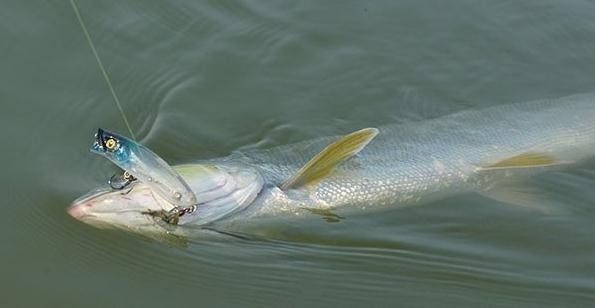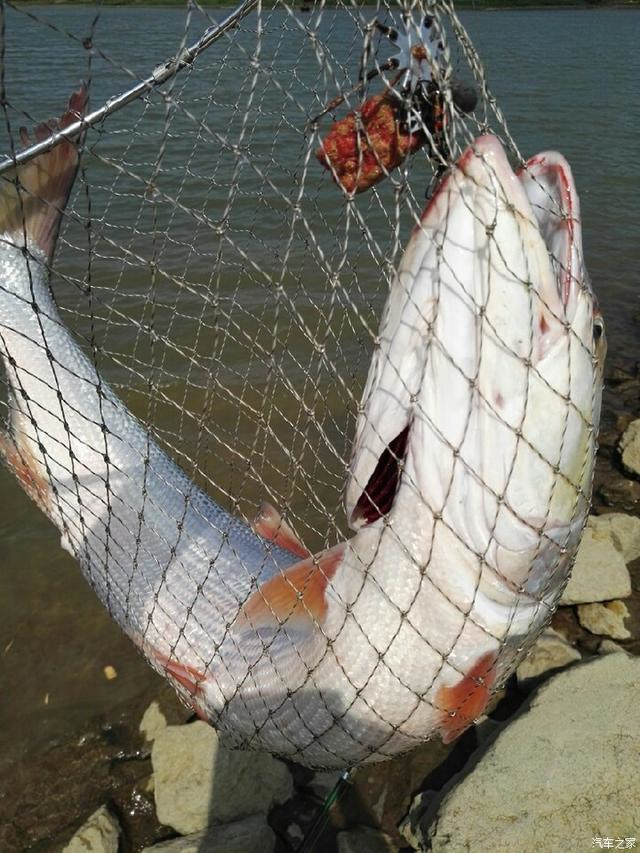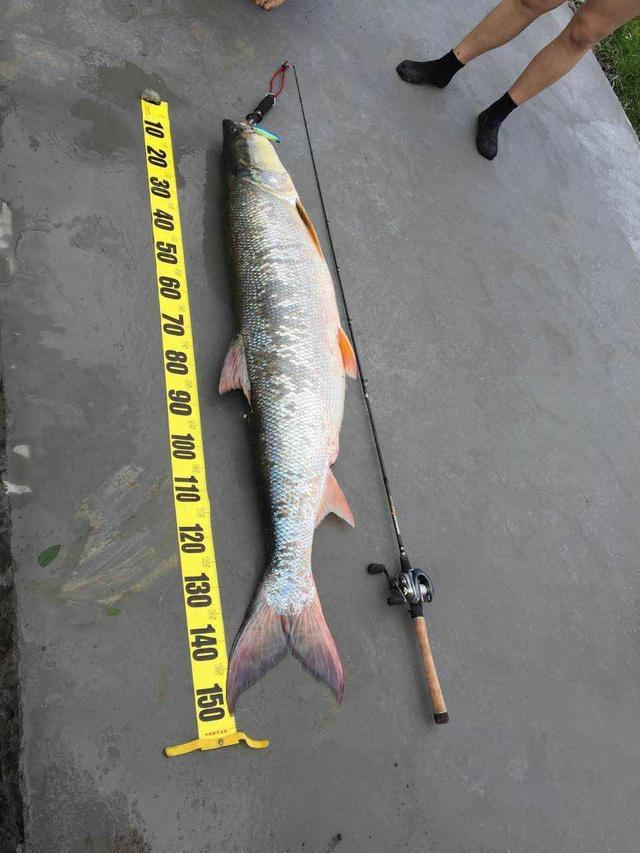Every angler dreams of landing a super-sized fish, a personal trophy that becomes the ultimate bragging right among fellow fishermen. Common giant freshwater species include black carp, grass carp, and Silver carp, with black carp being the largest, sometimes exceeding 200 pounds. But black carp are too ordinary—to truly stand out, you need something unique. Enter the star of today’s discussion: a rare giant known as the king of freshwater fish, a species with no natural predators—the Elopichthys bambusa, or what we call the “water tiger.”
This fish, often referred to as the yellow cheek or water tiger, inhabits rivers and lakes, typically in the upper and middle water layers. It is an powerful swimmer, fiercely aggressive, and highly agile, frequently attacking and preying on other fish, making it a classic predatory species. Elopichthys bambusa grows rapidly, reaching up to 3.5 kilograms in just two years. Even after sexual maturity, it continues to increase in size, with the largest specimens measuring up to 2 meters and weighing as much as 60 kilograms. Widely distributed across plain regions from north to south, this fish is abundant in natural waters and is considered a major economic species in rivers and lakes. However, due to its vicious nature and strong predatory instincts, it consumes large numbers of other valuable fish, earning it the reputation as the top “pest fish” in aquaculture.

Given its ferocity and substantial size, catching Elopichthys bambusa requires thorough preparation.
1. Selecting Fishing Spots
When targeting Elopichthys bambusa, focus on rivers, choosing locations based on its activity patterns and feeding habits. This fish is an adept swimmer with a wide range, often preferring open waters and areas rich in other fish species. These spots are typically where it hunts smaller prey or where oxygen levels are high. Prime fishing locations include dams, bridge piers, river confluences, waterside structures, and inlets or outlets.
2. Choosing Fishing Gear
As mentioned, Elopichthys bambusa is fiercely aggressive and swift, requiring robust tackle. For live bait floating or lure trolling, use a stiff casting rod between 3.6 to 4.5 meters. Pair it with a large spinning reel (size 2000 or above) capable of holding 100–200 meters of 0.5mm line. Opt for large single or double hooks, with leaders made from multi-strand nylon braid or high-strength steel wire.

3. Bait Options
For Elopichthys bambusa, both live bait and lures are effective. When using live bait for floating rigs, leverage its aggressive nature by targeting its tendency to chase and attack other fish. Suitable live baits include larger minnows, loaches, or Crucian carp. For artificial lures, try lure fishing—Elopichthys bambusa is a prized target for many lure enthusiasts. The trolling method works well: cast the lure into the fishing area, and once it reaches the fish’s depth, retrieve the line to mimic a swimming fish, enticing a strike. Successful lure fishing demands knowledge of water depth and the fish’s habits. Be ready to change spots frequently if one area proves unproductive, actively expanding your range to increase chances.
4. Proper Drag Adjustment
Elopichthys bambusa strikes fiercely, often submerging the float instantly and bending the rod tip rapidly. To avoid being caught off guard, set the reel’s drag after casting—adjust it to a point where you can pull line out with firm hand pressure. This ensures the hooked fish fights against resistance, gradually tiring itself out.

5. Effective Fish Playing
Due to its immense strength, if you find yourself in a passive fight after the hookset, focus on stabilizing the fish and controlling its direction without rushing to bring it close. Only after sustained playing, when its struggles weaken, should you slowly reel it toward you. Once the fish is exhausted and rolls sideways on the surface, use a landing net to secure it.

In Conclusion
Fishing, as a recreational outdoor activity, not only provides delicious catches but, more importantly, offers joy and promotes well-being. While enjoying the thrill, remember to practice catch and release, keep larger fish and free smaller ones, and always clean up any fishing-related trash. Protecting fish resources and preserving fishing environments start with every angler.
Finally, may every angler achieve their dream of landing that super-sized fish and make their big-fish fantasy a reality.